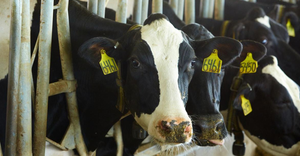
New York’s long-debated and many-times-revised Packaging Reduction and Recycling Infrastructure Act is the center focus again, with days left to move to the Senate and Assembly before the legislative session ends.
Formally known as A5322/S4246, the bill has several provisions:
Companies would have to halve single-use plastic and packaging incrementally over 12 years.
Producers would pay to collect and manage what they still produce once it’s spent, with the funds invested in New York’s recycling and reuse system.
Several toxic chemicals would be banned from packaging, including PFAS, phthalates, bisphenols, and heavy metals.
What is known as chemical recycling would not be recognized as recycling.
Proponents say the legislation would address an out-of-control waste problem while providing economic payoffs.
It would chip away at the roughly 6.8 million tons of packaging waste produced each year in New York—40 percent of the total waste stream. And it would save taxpayers an estimated $250 million per year, they contend.
“Our municipalities are drowning in waste, and it’s costing our taxpayers and municipalities hundreds of millions of dollars that can be better spent on teachers, on firefighters, on social workers,” said Senator Pete Harckham at a June 5 press conference. Harckham, who co-sponsored the bill with Assemblymember Deborah Glick, pointed out that the staggering amount of packaging and single-use plastic, along with the associated toxins, methane and carbon emissions created by “our whole waste system” are primary shared concerns among “dozens” of stakeholders he’s engaged with.
He outlined some topline changes in the updated legislation, intended to provide compromise and/or leeway.
One is a shift from multiple producer responsibility organizations to one initially. But to leave the door open for others later.
The bill also would now ensure protections for existing waste management contracts. “It’s not fair to penalize folks who�’ve made significant investments based on their current contract,” Harckham said.
A third adjustment is around the definition of recycling. “We put in flexibility that allows the legislature to revisit [terms] every three years as the technology and materials change.”
Businesses can embrace this [legislation] and plan over time, said Judith Enck, president of Beyond Plastics and former Environmental Protection Agency administrator. She pointed out the decade-plus window provided to hit 50% packaging waste reduction and that producers would have until 2050 to ensure their packaging is 75 percent recyclable.
“This is a real problem with a real solution,” Enck said.
The Business Council of New York opposes the bill stating for one that, as amended, it has a new focus on restricting the sale of plastic packaging and one-use products, and requires source reduction of all packaging types. “In doing so, the bill disregards practical considerations and will adversely impact consumer choices and costs,” the Council said in a statement.
The EPS Alliance, who represents polystyrene manufacturers and recyclers, opposes the bill too.
"I'd like to see Extended Producer Responsibility (EPR) focus be on keeping material in commerce and out of the landfills and not dipping into bans and attacks on chemistries and materials that aren't understood. There's no assessment as to whether the others have a greater or lesser environmental impact,” said Walter Reiter, director of advocacy and regulatory affairs with EPS Alliance, as reported in Spectrum News.
Based on concerns over who decides which chemicals should be eliminated from packaging, a task force was assembled to make recommendations to New York’s Department of Environmental Conservation (DEC), to include representatives with environmental, food packaging, and chemistry expertise.
The American Forest & Paper Association has objections, charging the bill does not reflect the complexities of the state’s recycling system and could impact the long-term success of highly recycled materials, like paper.
Some industry stakeholders have argued that the bill is a top-down mandate from the state directing them on how to operate. Actually, the state’s primary role is to set a performance standard but turn to the private sector to strategize, reasons Patrick McClellan, policy director at New York League of Conservation Voters.
“It works with the private sector to say, you are the experts on your supply chain, manufacturing, and other details. You tell us how you are going to meet this standard. That’s fundamentally what EPR is,” he said.
Assemblymember Glick said the signal to greatly reduce plastic packaging has sounded for some time. And that she and other bill backers believe in shared responsibility.
“I remember [former New York Assemblymember] Ricard Brodsky’s packaging bill 30 years ago. So, we haven’t rushed this off the presses,” she said, adding that A5322/S4246 is just broader, reaching into new areas.
“And this should not just be the responsibility of municipalities and taxpayers. This should be something where our friends in the industry take some responsibility for the waste that they generate in our homes,” Glick said.
“We have set the stage for this kind of shared responsibility for materials that go out into the world and need to be recycled or dealt with in some other fashion. We think this is a great step forward for New York,” she said.
A5322/S4246 could be up for a vote by Friday June 9, though some stakeholders question whether it can make it to the floor in the few days left to move it.
About the Author(s)
You May Also Like




